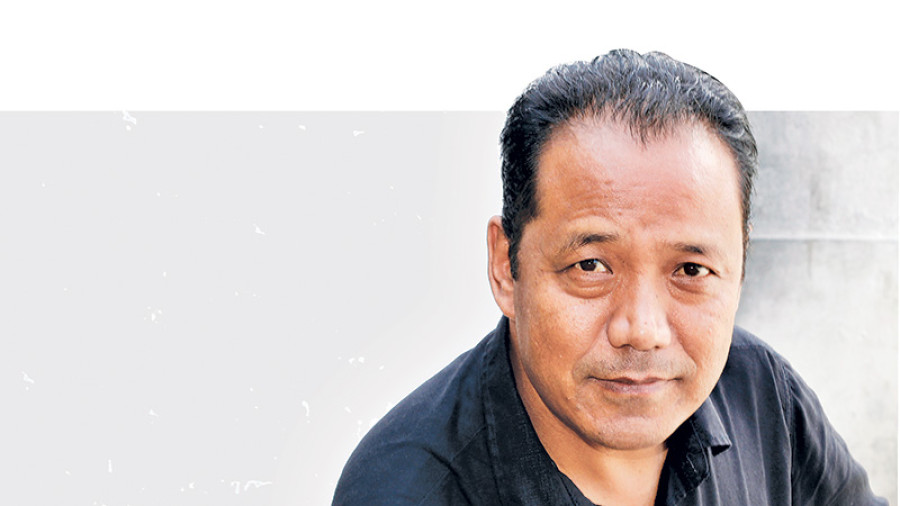Miscellaneous
Decoding the teenage mind
Tirtha Gurung recently published his first novel, Pathshala. Pathshala is one of the few books in Nepali literature written from the perspective of a teenager for teenagers.
Tirtha Gurung recently published his first novel, Pathshala. Pathshala is one of the few books in Nepali literature written from the perspective of a teenager for teenagers. In this conversation with the Post’s Samikshya Bhattarai, Gurung talks about his new book, adoloscence, mental health and more. Excerpts:
Can you tell us about your debut book Pathshala?
Pathshala is a story of a teenager told in his own voice. The book tells the story of an urban teenager and encapsulates the elements of his social life—friends, family, school. It is a straightforward story that puts light on what it is like to be an adolescent growing up in the city, and the ups and downs that accompany the age. Even though adolescence is one of the most important phases in a human’s life, there have only been a few works that explore it. There are only handful good Nepali books that are targeted at the readers who are coming of age, and even less that tell the story from their perspective. I have tried my best to incorporate the lingo a modern day teenager would use in this book, which hopefully makes Pathshala a unique young-adult book in Nepal.
The book tells the story of a teenager who lives in a society that goes at least 15 years back in time. Is it safe to say that the book is inspired by your own life?
While the book does go back in time in its plot, it is not entirely inspired by my own life. In fact, Gagan, the protagonist, and I are very different when it comes to our upbringing. The story takes place in the urban setting of Pokhara and Gagan is the typical city kid. I, on the other hand, was born and raised in the remote village of Sikles.
But then, no writer can write without drawing from his or her own life. The inspiration for Pathshala came to me when I was a teacher at various boarding schools, where I constantly interacted with young adolescents. This book brings together different stories of different students that I have come across in my teaching career.

How difficult or easy was it to write about the life of a teenager, having yourself outgrown the phase?
Yes, I have outgrown that age, but I meet Gagans every day, and they remind me what it’s like to be a teenager. Many incidents in the book have actually unfolded in front of my eyes. It was not that difficult to pen this book down.
The book touches upon the subject of depression. What are the challenges, for a writer, in tapping into mental health issues when it is still not openly talked about in Nepal?
I have to admit writing about mental health was a challenge. We live in a society where even when depression and anxiety are part of our everyday, we don’t say a word about them. It’s like we are in perpetual denial. While I have paid a lot of attention to mental health in the book, I haven’t come across many teenagers who acknowledge the fact that they are having a difficult time and need help. None of my students have ever opened up to me, or I am guessing, even to their parents. To fill up the holes, I had to research on my own and use my imagination.
Do you think your book will be able to start conversations about mental health?
I hope it does. Adolescence is a time where a lot of youngsters undergo depression and anxiety, and we need to create an environment where they can open up and seek help. Literature is a great tool to help teenagers know that it is okay, and it is natural, and they should talk to somebody when they are not feeling right.
You have used many English words in your book and some of your contemporary writers have been been criticised for doing so. What is your take on merging languages?
I personally don’t like mixing the two languages when writing. I think, Nepali literature is better when written in its original form. However, we live in a time where English has seeped into our everyday vernacular. So, it is almost impossible to sound natural without using a few English words here and there, especially where you are writing for teenagers in this globalised world. English language has a massive influence on teenagers today; it is as big part of them as Nepali is. Pathshala is narrated by a confused and angry adolescent. Using English was important to give my story the authenticity it demanded.
This is your first book. How has the response been so far?
The response has been largely encouraging. I have been showered with a lot of love and support, even though this is my first attempt at a book. It has been a great
encouragement to keep at the craft and hone it further.
What then is next in the pipeline?
I just finished my first book, so I’m currently just soaking in the response from readers and well-wishers. I will observe the response, take notes of the suggestions, and reflect on my work before diving into another work.




 16.12°C Kathmandu
16.12°C Kathmandu









